Strap in and prepare to be awestruck by the pinnacle of aerospace engineering. Let’s Explore The Tupolev Tu-22M3 Bomber In Detail to witness its raw power and extraordinary capabilities. With supersonic speeds, a massive payload capacity, and an arsenal of deadly weapons, this aircraft is a true force to be reckoned with.
Its afterburning turbofan engines roar to life, propelling it through the skies at breathtaking speeds, while its advanced technology and precision allow it to perform a wide range of missions with devastating accuracy, from conventional bombing to the last nuclear strike.
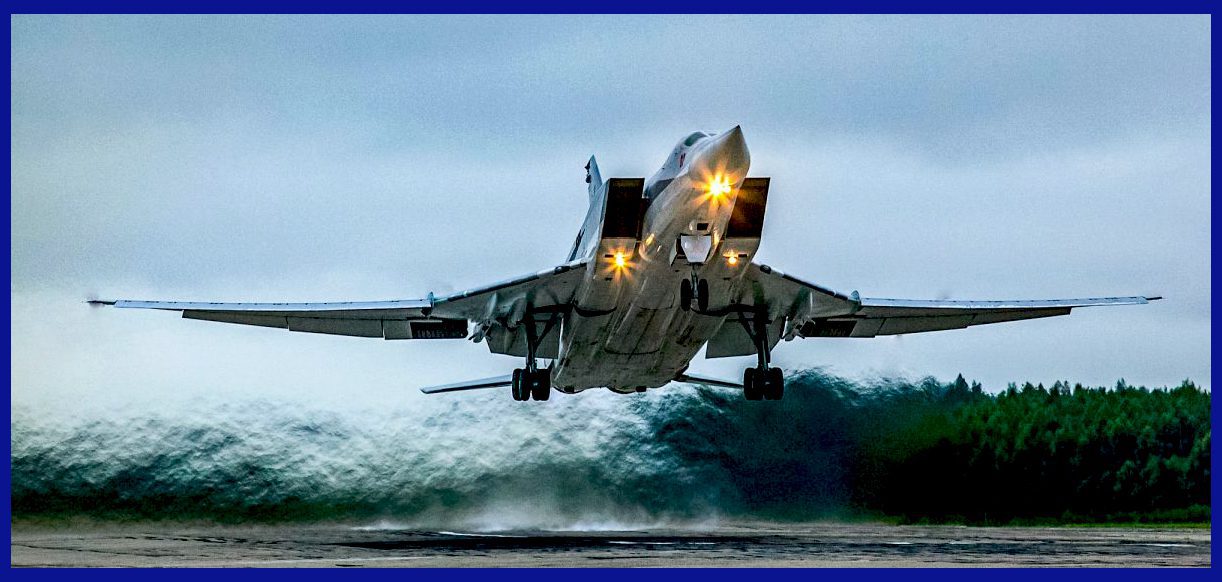
The Tupolev Tu-22M3 bomber is an extraordinary aircraft that has served for numerous decades. Designed by the Tupolev Design Bureau in the 1960s, this long-range strategic and maritime strike bomber boasts supersonic speeds and a variable-sweep wing. Throughout the Cold War era, the Tu-22M operated under the Soviet Air Forces in the crucial roles of a missile carrier for strategic bombing and the Soviet Naval Aviation in long-range maritime anti-shipping missions. Even with the passing of time, the Tu-22M3M continues to demonstrate its might, as 66 of these remarkable aircraft remain operational as of 2023.

Construction Of The Tu-22 Bomber
The origins of the Tu-22 can be traced back to a research study conducted in 1955, with the objective of developing a supersonic bomber capable of effectively penetrating advanced air defence systems at high altitudes and speeds to carry out nuclear weapon delivery. In September 1959, the aircraft successfully completed its inaugural flight, marking a significant milestone as Russia’s first operational supersonic bomber. It was not until 1961 that the Western world became aware of the Tu-22, when ten aircraft, including one equipped with a cruise missile, made a public appearance during a flypast. This event undoubtedly stirred up considerable interest and speculation among NATO analysts, resulting in the swift assignment of the codename “Blinder” to this formidable aircraft.
About 300 Tu-22s were built between 1960 and 1969, the first version being the Tu-22 ” Blinder-A ” bomber/reconnaissance version carrying free-fall nuclear bombs. The Tu-22K ” Blinder-B ” was a missile-carrying version armed with AS-4 missiles and a large guidance radar mounted under its nose. The ” Blinder-C ” was a daylight reconnaissance version with Six windows in the bomb bay for three pairs of long-range cameras. The Tu-22U ” Blinder-D ” was a trainer version with the instructor pilot seated in a separate raised cockpit, and the Tu-22P ” Blinder-E ” was an ECM ( electronic countermeasures ) version based on the Tu-22R.

Once in service, the Tu-22 offered no great advantage over the Tu-16 that it was intended to replace. The Tu-22 was not built in great numbers, reportedly because of problems with reliability, and Tupolev sought to revise the aircraft’s design to produce much better performance. It was this study that resulted in the Tu-22M (Backfire), originally a swing-wing version of the Tu-22, which became an all-new aircraft.
The engine on the Tu-22M was changed to the much more powerful Kuznetsov unit and was repositioned to the more conventional location in the rear fuselage. The Tu-22M prototype, much altered from the original Tu-22 design, first flew on August 30, 1964. It was another Five years before NATO became aware of the new aircraft and was able to codename it ” Backfire-A “.
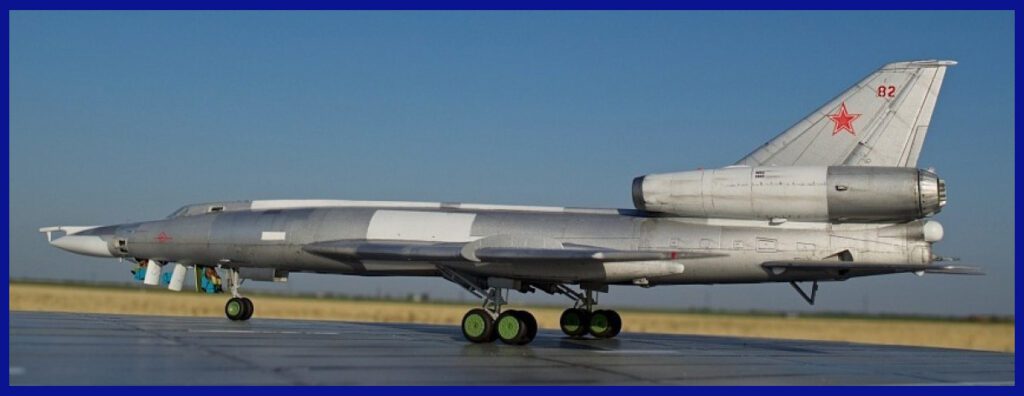
The most advanced version of the Tu-22, the Tu-22M, was developed in the 1970s and featured a variable-sweep wing design that allowed it to adjust its wingspan during flight to optimize performance at different speeds and altitudes. This version was also equipped with more powerful engines, upgraded avionics, and improved weapons systems.
However, US intelligence had been aware of the plane’s existence since 1969, and the first satellite image of the bomber was captured in 1970. The aircraft’s existence shocked US intelligence since Nikita Khrushchev, the Soviet leader from 1964 to 1964, was sure that ICBMs would render the bomber obsolete.
The first production version ( of a total run of around 500 aircraft ) was the Tu-22M-2 ” Backfire-B ” but then in 1980 production switched to the Tu-22M-3 ” Backfire-C “, fitted with more powerful engines and having revised air intakes. Most importantly, this version can carry a number of Kh-15 ( kickback ) missiles which can be configured for anti-radar, anti-shipping, conventional or nuclear missions. Around 300 examples of the M-2 have been built, and they are still very much in front-line service with both Russia and the only other operator, Ukraine. A small number of the ECM versions, the Tu-22MR, were also built.

Upgrades To the Tu-22 Bomber
In 1990, the Tupolev Design Bureau initiated an effort to modernize the Tu-22M bomber, named Adaptation-45.03M. The primary focus of this upgrade was to modernize the aircraft’s radar system. However, the project was eventually abandoned before it could progress to the production stage. Subsequently, in 2007, a new radar system for the Tu-22M, known as the NV-45, began development. The maiden flight with the newly developed radar took place in 2008 on a Tu-22M aircraft. Following this successful test, four additional Tu-22Ms were retrofitted with the advanced NV-45 radar system between 2014 and 2015.
In September 2014, a contract was formally executed for a comprehensive mid-life upgrade of the Tu-22M3 bomber, designated as the Tu-22M3M. This upgrade entails the integration of a further modified NV-45M radar, alongside the incorporation of new navigation equipment and a modified flight control system. Moreover, the existing tail gun on the Tu-22M3 will be replaced with a new self-defence electronic radar suite.
Many of the newly introduced avionics will be shared with the upgraded Tu-160M2 aircraft. The enhancement plans for armament include the addition of the new Kh-32 missile, which is a modified version of the current Kh-22, as well as the subsonic Kh-SD, the hypersonic Kh-MT, or the Kh-47M2 Kinzhal missiles. Initially, the deliveries of the Tu-22M3M were expected to commence in 2021, as indicated in reports from 2018.
According to TASS, on May 11th, 2020, anonymous sources in the military-industrial complex reported that a new hypersonic missile, not part of the Kh-32 family, was test-launched from a Tu-22M3M. The work on this missile reportedly began several years before, and its tests were expected to be completed simultaneously with the upgrades on the Tu-22M3M bomber.
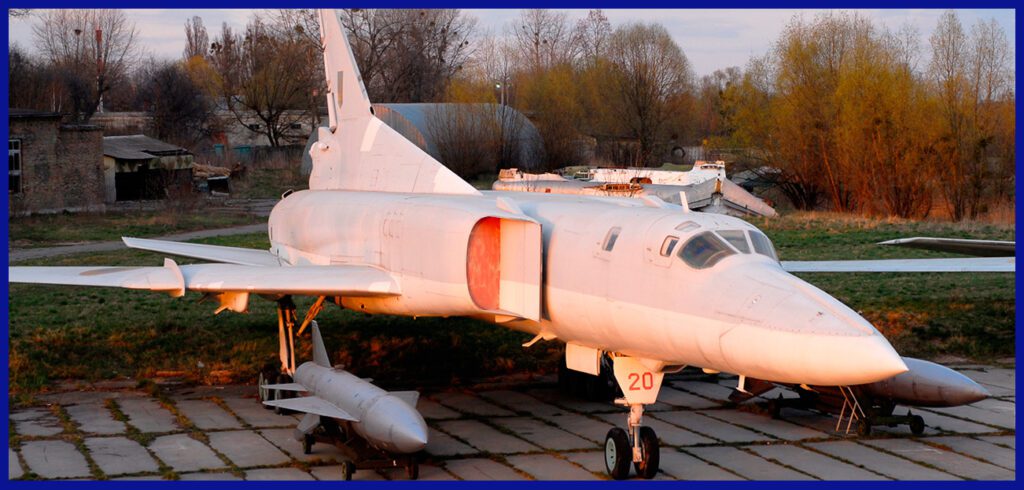
Background On The Tu-22 Bomber’s Operations
The Tu-22M has had a long and varied operational history. During the Cold War, the Soviet Union operated the bomber in two main roles, as a strategic missile carrier for the Soviet Air Forces and as a long-range maritime anti-shipping bomber for the Soviet Naval Aviation. In the 1980s, the Tu-22M saw combat in Afghanistan, where it was used to drop guided bombs on Mujahideen targets.
In recent years, the Tu-22M3M has been used in a variety of operations, including bombing missions against ISIS targets in Syria. The aircraft has also been used for strategic reconnaissance and to test new missile and weapon systems. With its combination of range, speed, and payload capacity, the Tu-22M3M remains a key part of Russia’s strategic bomber force.
On 15 April 2022, the Ukrainian Defense Ministry announced that Russia had used Tu-22M3 bombers to attack targets in Mariupol, marking the first time the bombers were deployed since the start of the invasion. Earlier reports indicated that reactivated FAB-3000M-46 Dumb Bombs were used with Tu-22M3 bombers to attack targets at the Azovstal iron and steel works plant, which was the last stronghold for Ukrainian troops in the besieged city of Mariupol. Additionally, on 11 May 2022, a video was posted online showing a Russian Air Force Tu-22M3 bomber launching two Kh-22 missiles at unknown targets in Ukraine.
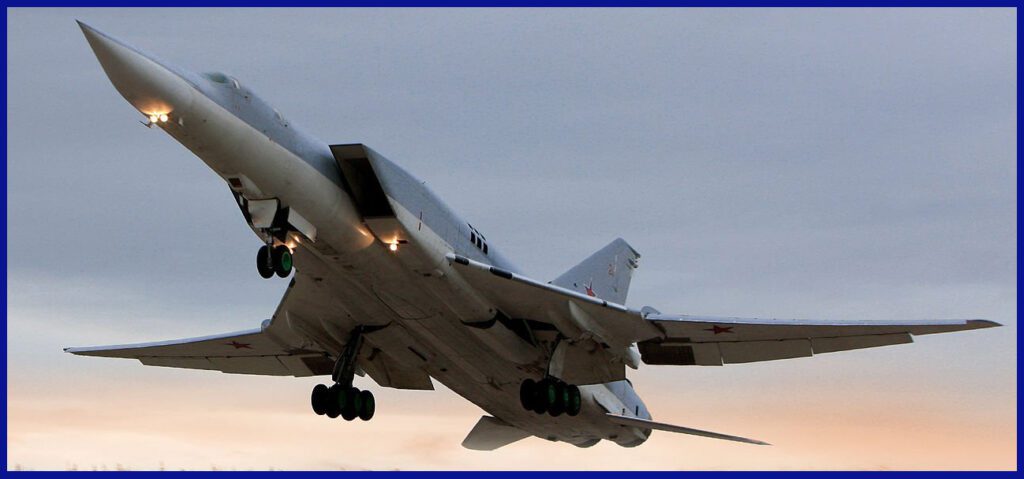
Here Is A Recap Of The Summary Of The Tu-22 Aircraft
- The Tupolev Tu-22M3 is a strategic bomber explicitly engineered to execute an extensive array of missions, encompassing both nuclear and conventional strikes.
- It has a maximum speed of around 2,300 km/h ( 1,400 mph ) and can fly at altitudes of up to 13,000 meters ( 43,000 feet ).
- The bomber has a crew of four members: a pilot, co-pilot, navigator, and weapons system officer.
- It is powered by two afterburning turbofan engines, which give it a range of over 6,000 km ( 3,700 miles ) without aerial refuelling.
- The Tu-22M3 has a length of around 43 meters ( 138 feet ) and a wingspan of around 23 meters ( 75 feet ).
- It is armed with a variety of weapons, including missiles, bombs, and machine guns.
- The NATO reporting name for the Tu-22M3 is Backfire-C.
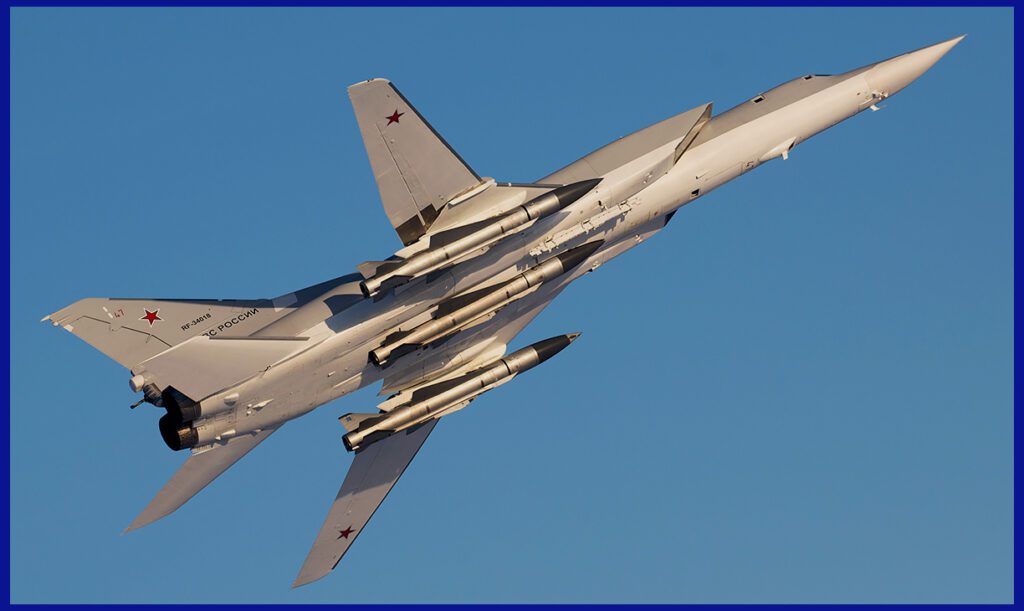
The Tupolev Tu-22M-3 Technical Specifications
- Pilot: 4 ( a pilot, co-pilot, navigator, and weapons system officer )
- Length: 139 ft 4 in ( 42.46 m )
- Wingspan: 112 ft 6 in ( 34.28 ) spread ( 20° sweep ) and 23.3 m ( 75 ft ) swept ( 65° sweep )
- Height: 36 ft 3 in ( 11.5 m )
- Empty Weight: 54,000 kg ( 1,18,854 lb )
- Max Takeoff Weight: 1,24,000 kg ( 2,72,924 lb )
- Payload: 24,000 kg ( 53,824 lb )
- Powerplant: 2 × Kuznetsov NK-2512MV Afterburning turbofan engines, 247.9 kN ( 55,700 lb ) with afterburner
- Max Speed: 2,300 km/h ( 1,400 mph ) / Mach – 1.90
- Combat range: 4,000 km ( 2485 Miles ) of radius
- Ferry range: 6,000 km ( 3,700 mi )
- Service ceiling: 43,400 ft ( 13,228 m )
- Rate Of Climb: 15 m/s ( 3,000 ft/min )
- Armament: 1 × 23-mm GSh-23 cannon in remotely controlled tail turret. On its wing and fuselage pylons, as well as its internal weapons bay with a capacity of 24,000 kg ( 53,000 lb ), the Tu-22 can carry a combination of weapons which includes: Kh-15, Kh-22, Kh-47M2 Kinzhal and various free-fall bombs weighing from 250 kg to 1,500 kg )

Alongside this article, seize the exclusive opportunity to acquire premium-scale diecast models of legendary Russian fighter jets, including the Sukhoi SU-57 Felon, SU-30SM Russian Knights, Sukhoi SU-34 Fullback, and Mikoyan MiG-29 Fulcrum. Available only at Air Models, these remarkable and iconic long-range military fighters boast impeccable track records and are now purchasable on AirModels with worldwide delivery. Click here now to secure your piece before the limited stock is depleted.

In conclusion, the Tu-22M3 is a formidable bomber that has been modernized and upgraded over the years to maintain its relevance in today’s battlefield. With its powerful engines, long-range capability, and advanced avionics, the Tu-22M3 is capable of carrying a wide variety of weapons and has been used in various military operations throughout its operational history. The recent addition of hypersonic missiles and advanced radar systems make it a potent asset in any conflict. Despite its controversial use in certain situations, the Tu-22M3 remains an impressive aircraft and a testament to the engineering prowess of its designers.
Important Announcement for Our Valued Readers!
After an article is published, it is possible that updates or changes may have occurred beyond the time of publication. Therefore, it is important to be aware that certain information in the article might be outdated. To ensure the most accurate analysis, it is highly recommended to verify the content with the latest sources available.
However, we are dedicated to delivering outstanding articles on military products and global updates. Maintaining quality and smooth operation requires resources. Your support sustains our efforts in providing insightful content. By purchasing high-quality products through our affiliated links, you help us keep our platform alive and acquire top-notch items. Your unwavering support is invaluable and inspires us to strive further.
We welcome your suggestions and requests for more information, as we value feedback from our readers. If there’s specific defence material or equipment not covered on our site, please share your request in the comments. We’ll strive to research and provide the required information. We sincerely thank you for your unwavering interest in our website, and we eagerly anticipate hearing from you! Enjoy your reading experience!
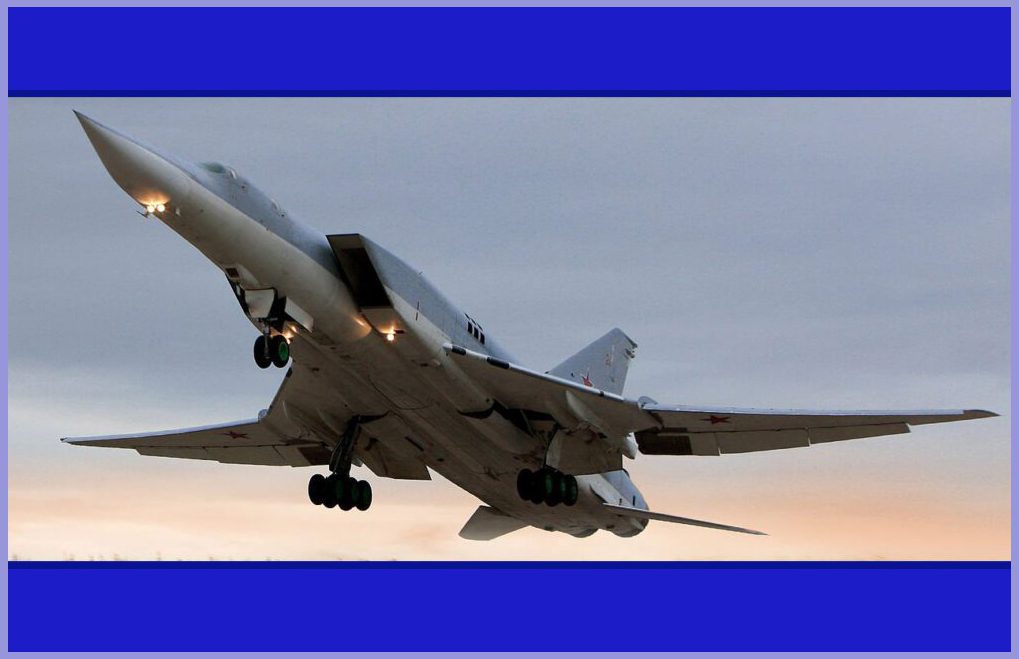
2 thoughts on “Let’s Explore The Tupolev Tu-22M3 Bomber In Detail”